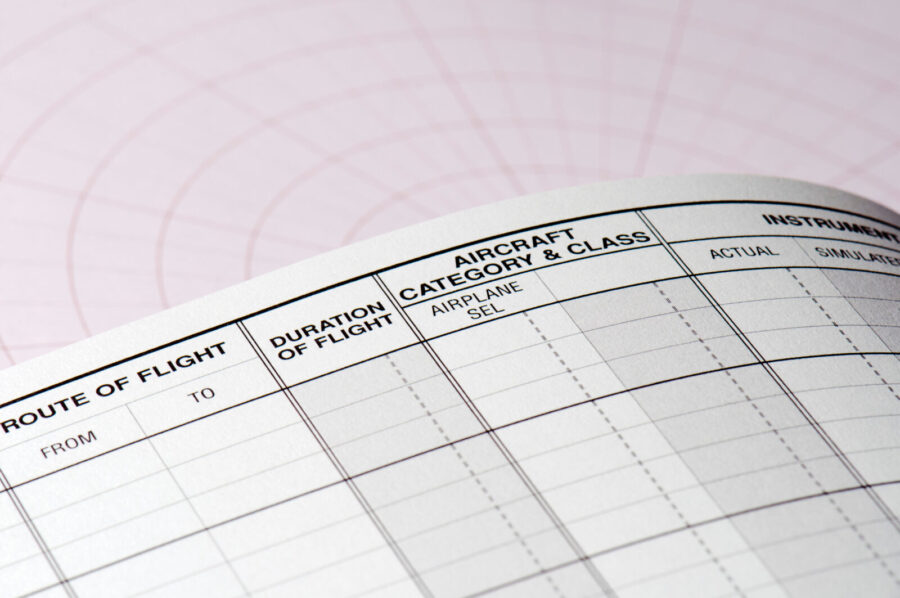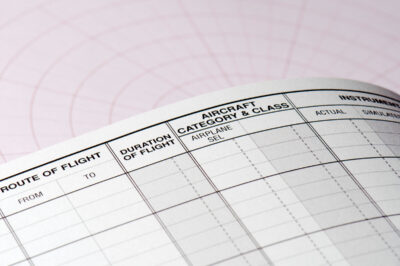Mastering Your Pilot Logbook: 10 Tips for Accurate and Efficient Logging
25 October 2023 | Updated on February 05, 2024
Every pilot, from novices to seasoned professionals, understands the significance of a well-maintained pilot logbook. It’s not just a record of hours flown; it’s a chronicle of one’s journey through the skies, capturing milestones, challenges, and achievements. However, maintaining a meticulous logbook requires more than just jotting down flight details. It’s about developing habits that ensure accuracy, clarity, and consistency. In this article, we delve into some essential tips that can elevate your logbook management, making it a true reflection of your dedication and progress in the world of aviation.
Essential Pilot Logbook Tips for Student Pilots
1. Regular Updates
Consistency is key. Logging your flight details immediately after each session ensures that memories are fresh, and no crucial information is overlooked. Regular updates not only help in maintaining accuracy but also instill a disciplined approach to record-keeping that will serve you well throughout your aviation career.
2. Double-Check Entries
In the world of aviation, precision is paramount. This principle applies not just to flying but also to maintaining your logbook. Whether you’re a fan of the tactile feel of a traditional paper logbook or you’ve embraced the convenience of a digital platform, the importance of reviewing your entries cannot be overstated.
Every entry in your logbook serves as a record of your experience, skills, and progress. A seemingly minor oversight, like misrecording a flight duration or mislabeling an aircraft type, can lead to significant discrepancies down the line. These errors can affect your total logged hours, potentially impacting certifications, ratings, or job applications.
Furthermore, consistent errors or discrepancies in your logbook might raise questions about its accuracy and reliability, especially when presented to aviation authorities or potential employers. It’s not just about the numbers; it’s about the story your logbook tells of your journey and dedication as a pilot.
Therefore, after logging each flight or experience, take a moment to double-check your entries. Verify dates, times, aircraft details, and any remarks or notes. If you’re using a digital platform, utilize any built-in verification or error-checking features it might offer.


3. Backup Regularly
In today’s digital age, data loss can be a pilot’s worst nightmare. For those using electronic logbooks, it’s essential to harness the power of automatic backups. By doing so, you ensure that your flight records are preserved, even if the unexpected occurs, like a device malfunction or software glitch.
But what about the traditionalists who prefer paper logbooks? While there’s undeniable charm in handwritten entries, these physical records are susceptible to wear, tear, and unforeseen accidents like spills or loss. To safeguard against this, make it a habit to scan or photograph your logbook pages regularly. Store these digital copies in a secure location, such as a cloud storage service or an external hard drive.
4. Promptly Log Endorsements
Whenever you receive an endorsement or certification from an instructor or authority, make it a point to log it immediately. This proactive approach ensures you capture all essential details accurately.
5. Prioritize Legibility
A logbook’s primary purpose is to serve as a clear record of your aviation journey. For those who prefer to manually record their entries, the clarity of your handwriting plays a pivotal role. Illegible entries can lead to confusion, misinterpretations, or even potential discrepancies when tallying hours or reviewing details.
To ensure your entries stand the test of time, opt for pens with waterproof ink. This simple choice can prevent smudging, especially if your logbook is exposed to moisture or humid conditions. Additionally, waterproof ink ensures that your records remain sharp and fade-resistant over the years.
6. Periodic Reviews
Dedicate some time every few months to go through your logbook. By revisiting past flights, you can gauge your progress, identify areas of improvement, and even spot patterns or trends in your flying habits.
This reflective practice can be especially beneficial for student pilots or those in training. By assessing your accumulated hours, types of flights, and the variety of conditions you’ve flown in, you can better prepare for exams, checkrides, or certifications. Moreover, these reviews can serve as motivation, reminding you of how far you’ve come and what milestones you’ve achieved.
Furthermore, periodic reviews provide an opportunity to set clear, actionable goals for the future. Whether it’s mastering a specific maneuver, increasing night flying hours, or aiming for a new certification, having tangible targets can enhance your focus and drive during training sessions.
7. Protect Your Investment
Treat your logbook as the valuable record it is. For those using paper logbooks, invest in a sturdy cover or case. This added protection ensures longevity and keeps your records safe from potential wear and tear.
8. Stay Updated
The aviation industry is dynamic, with regulations and standards evolving over time.
Regulatory bodies might introduce new logging requirements, modify existing ones, or even offer clarifications on ambiguous points. For instance, there might be changes in how certain flight hours are categorized, or new endorsements might be introduced.
To ensure your logbook remains compliant and accurate, make it a habit to periodically check for updates from your country’s aviation authority or relevant regulatory bodies. Many organizations offer newsletters or alert systems to keep their members informed. Subscribing to such services can be a proactive way to receive timely updates.
9. Don’t Hesitate to Seek Guidance
The aviation community is supportive and knowledgeable. If you’re ever in doubt about a particular entry or logging method, reach out to your instructor, peers, or seasoned pilots. Their insights can be invaluable.
10. Celebrate Your Achievements
Every page, every entry in your logbook captures a unique moment in your aviation journey. From the initial flights filled with trepidation to the more confident maneuvers of a seasoned pilot, each record is a milestone. And these milestones, big or small, deserve recognition.
Remember the exhilaration of your first solo flight? The pride when you clocked a landmark number of hours? Or the satisfaction of nailing a particularly challenging maneuver after numerous attempts? These are not just entries in a book; they are badges of honor, showcasing your dedication, resilience, and growth as a pilot.
It’s essential to pause and relish these achievements. Celebrating them can be as simple as sharing the moment with a mentor, treating yourself to a special meal, or even just taking a quiet moment to reflect on your journey. These celebrations not only boost your morale but also fuel your passion and drive for the many flights ahead.


In conclusion, your pilot logbook is more than just a diary of flights; it’s a reflection of your commitment and growth in the aviation realm. By adhering to these tips and maintaining a detailed and accurate record, you’re not only setting yourself up for success but also cherishing the memories and milestones of your flying journey.
Happy flying!





























